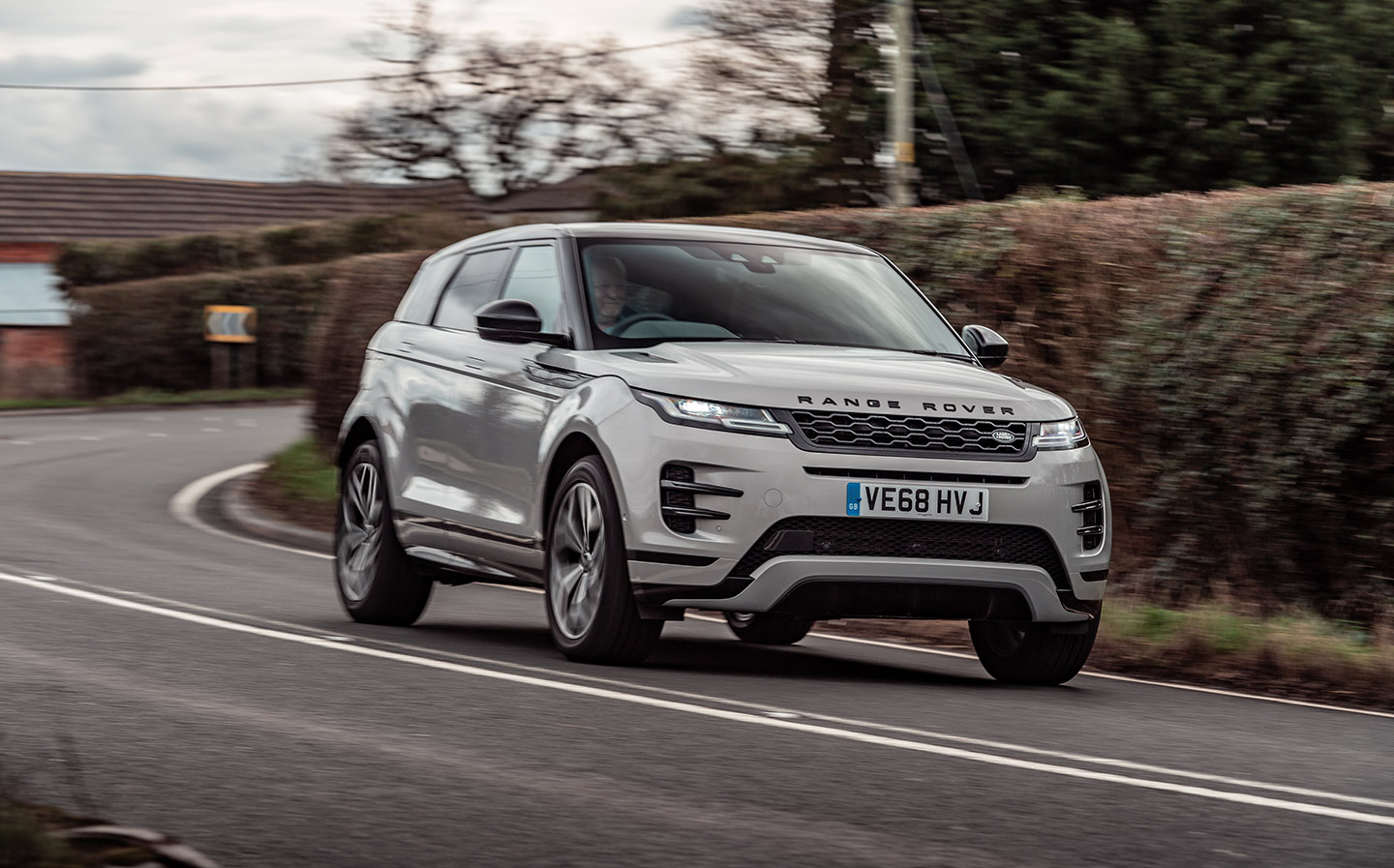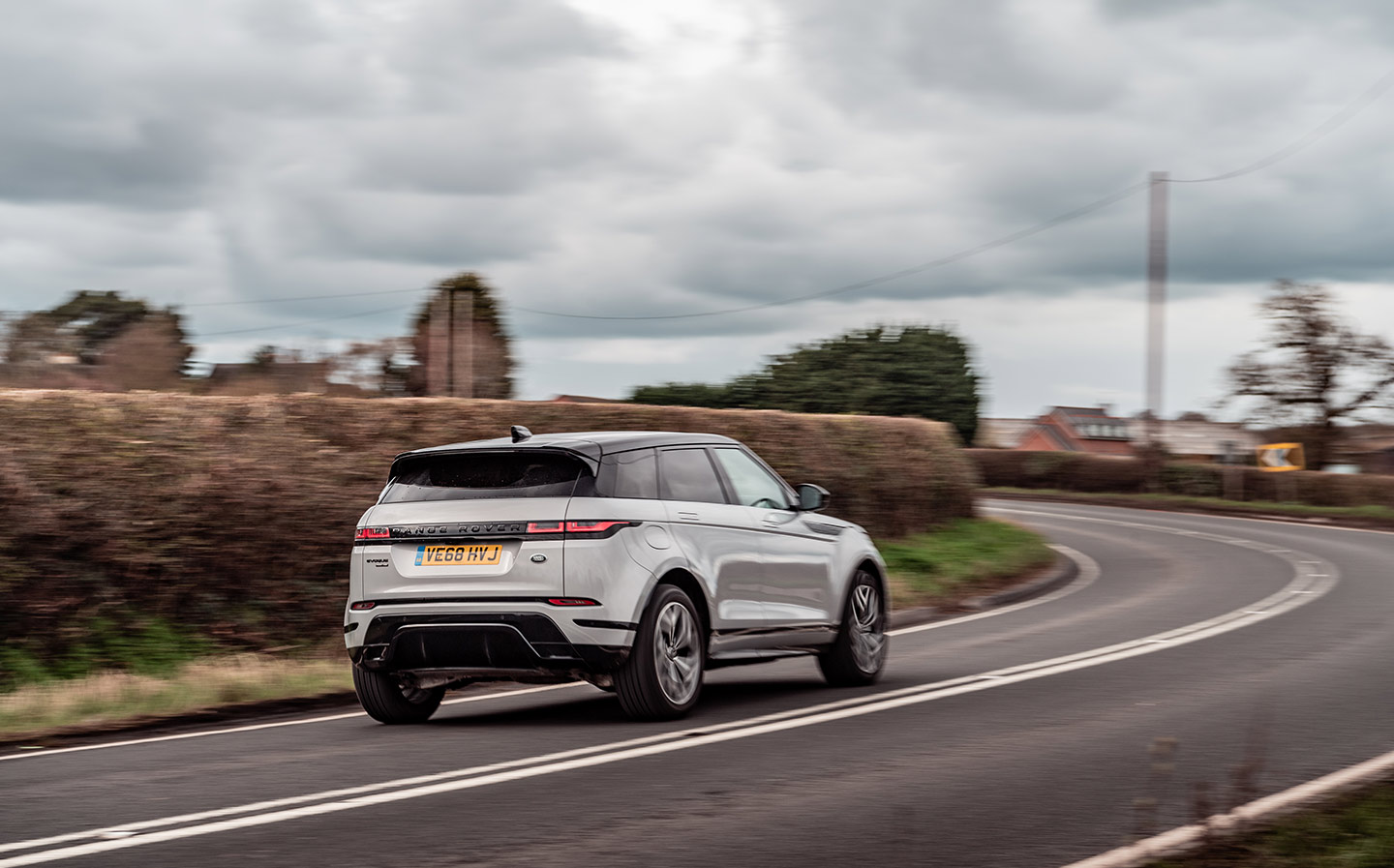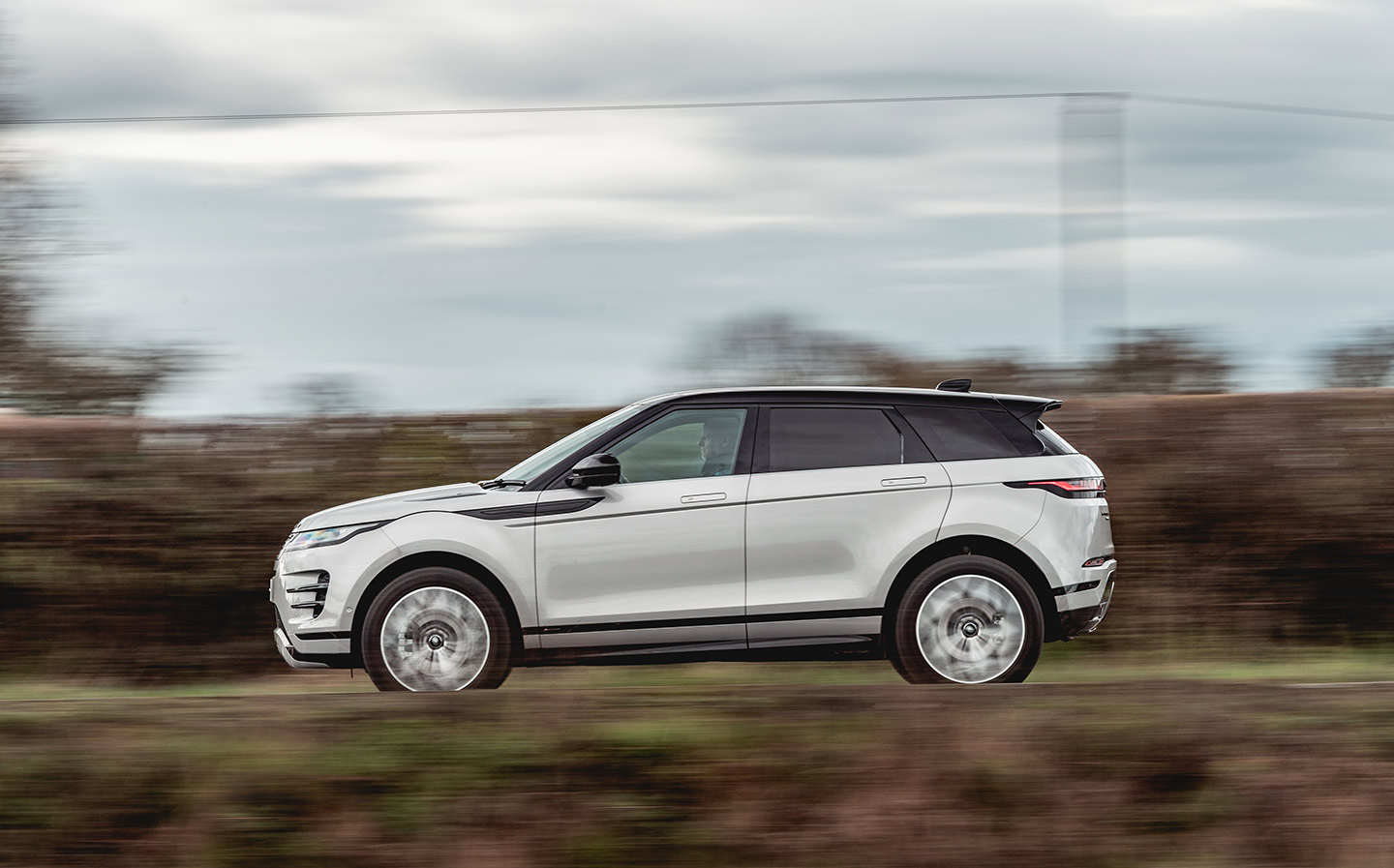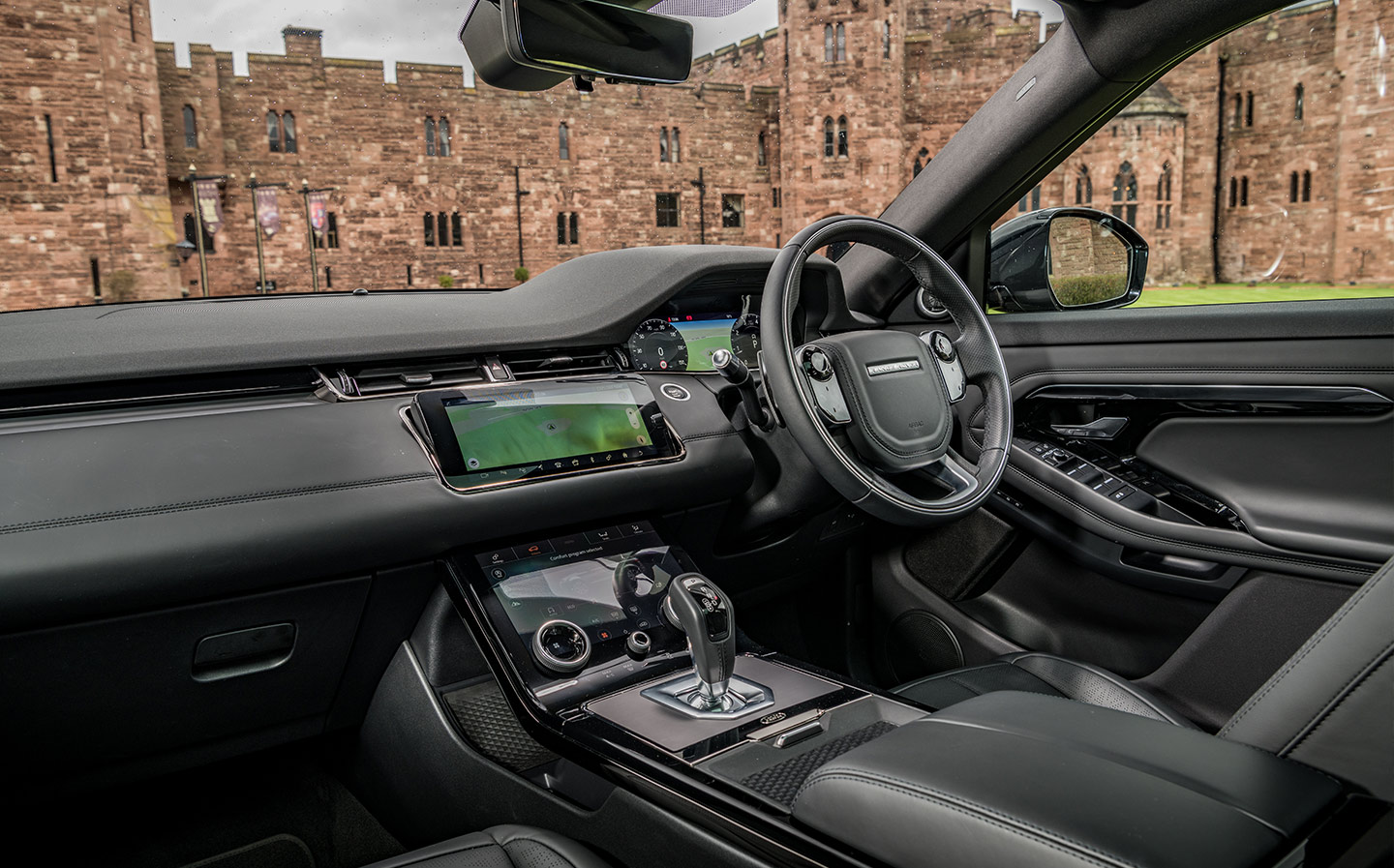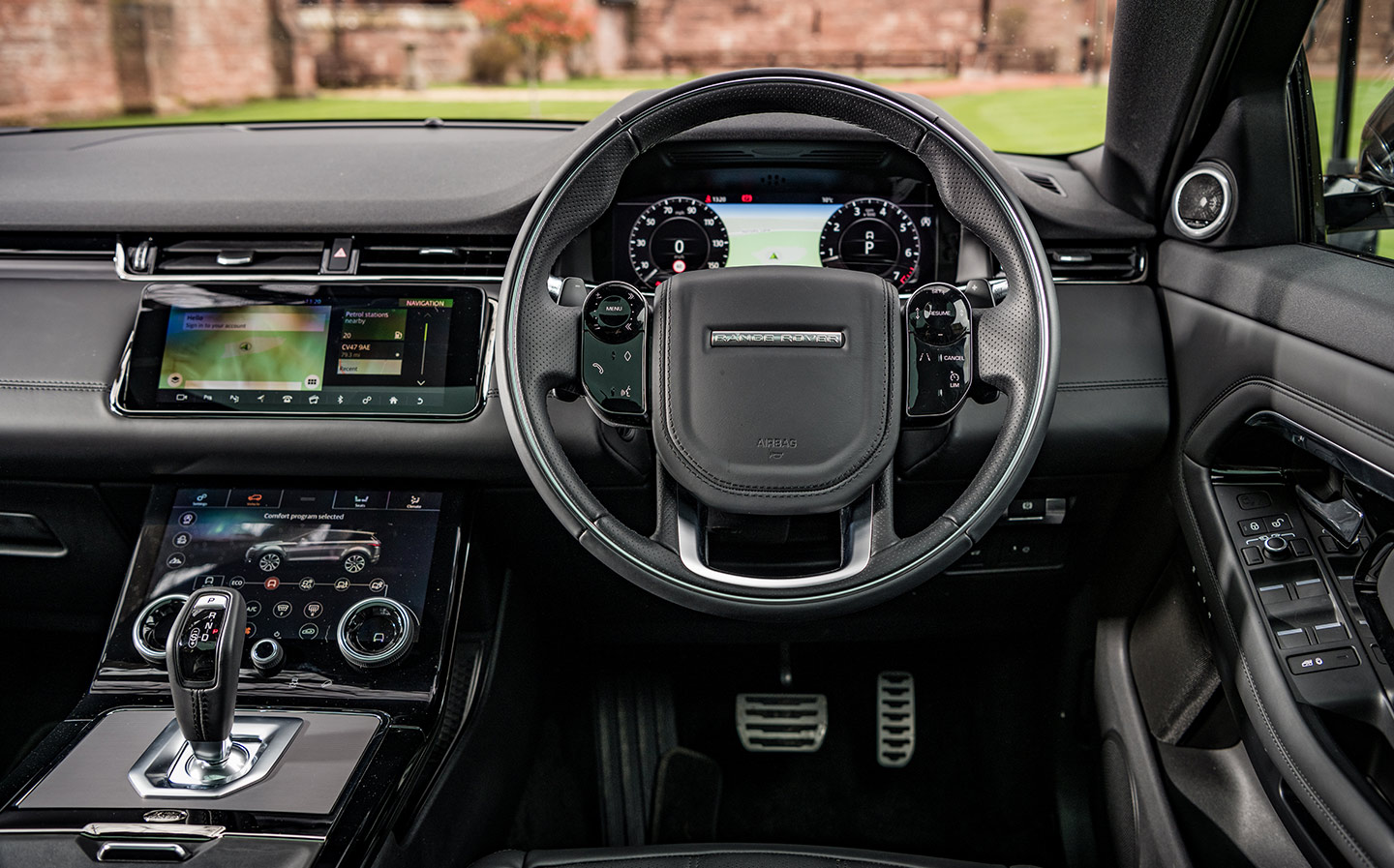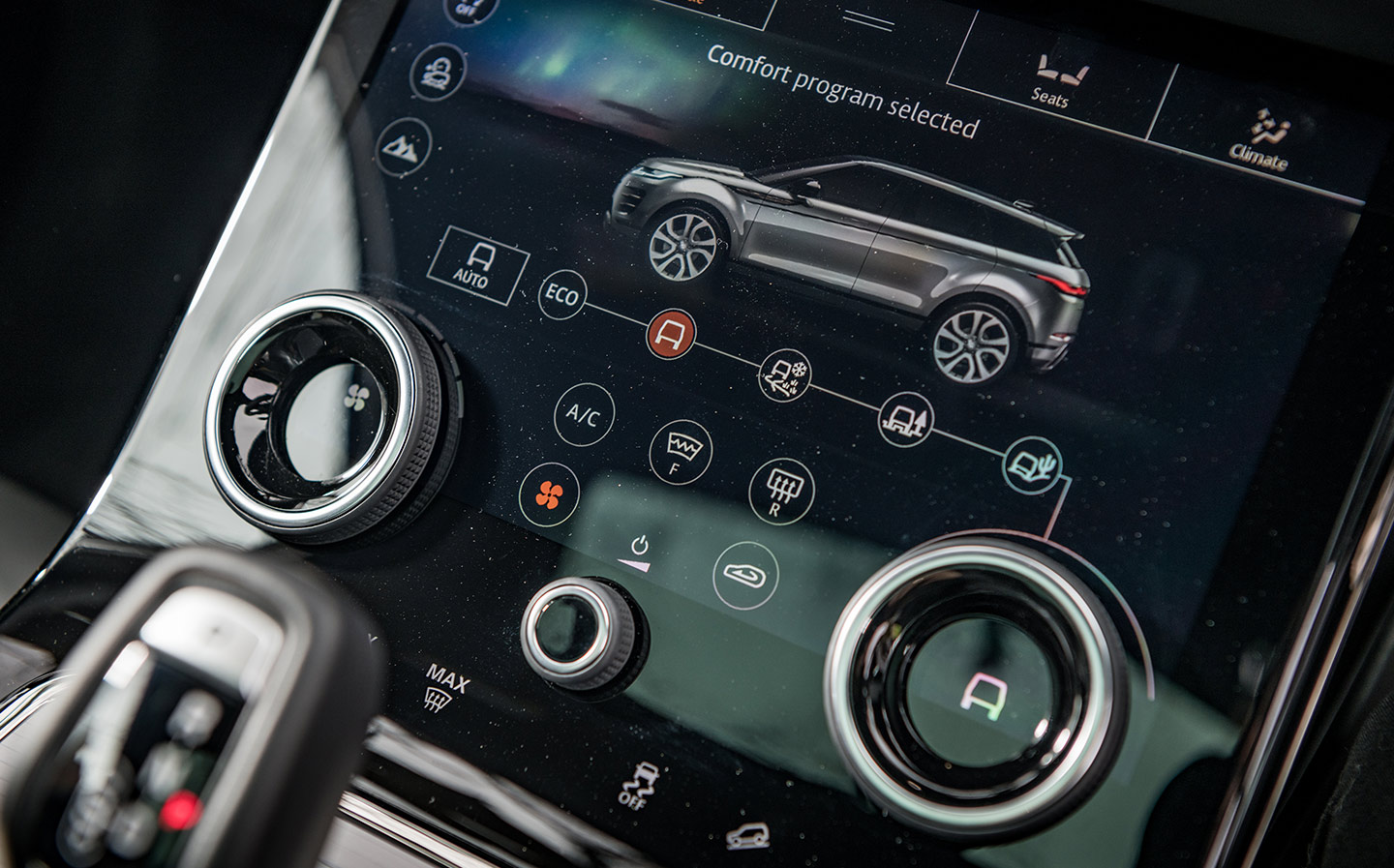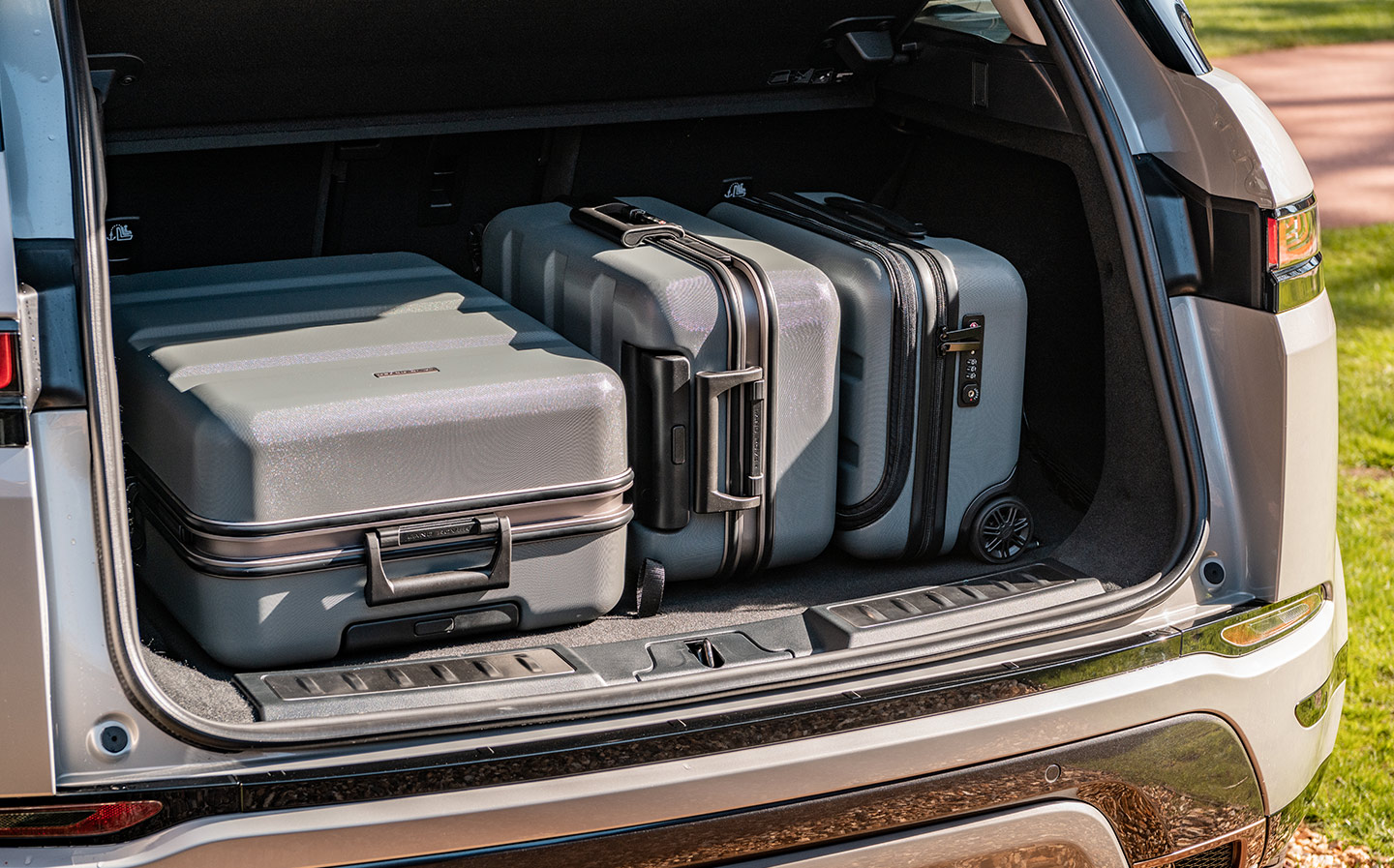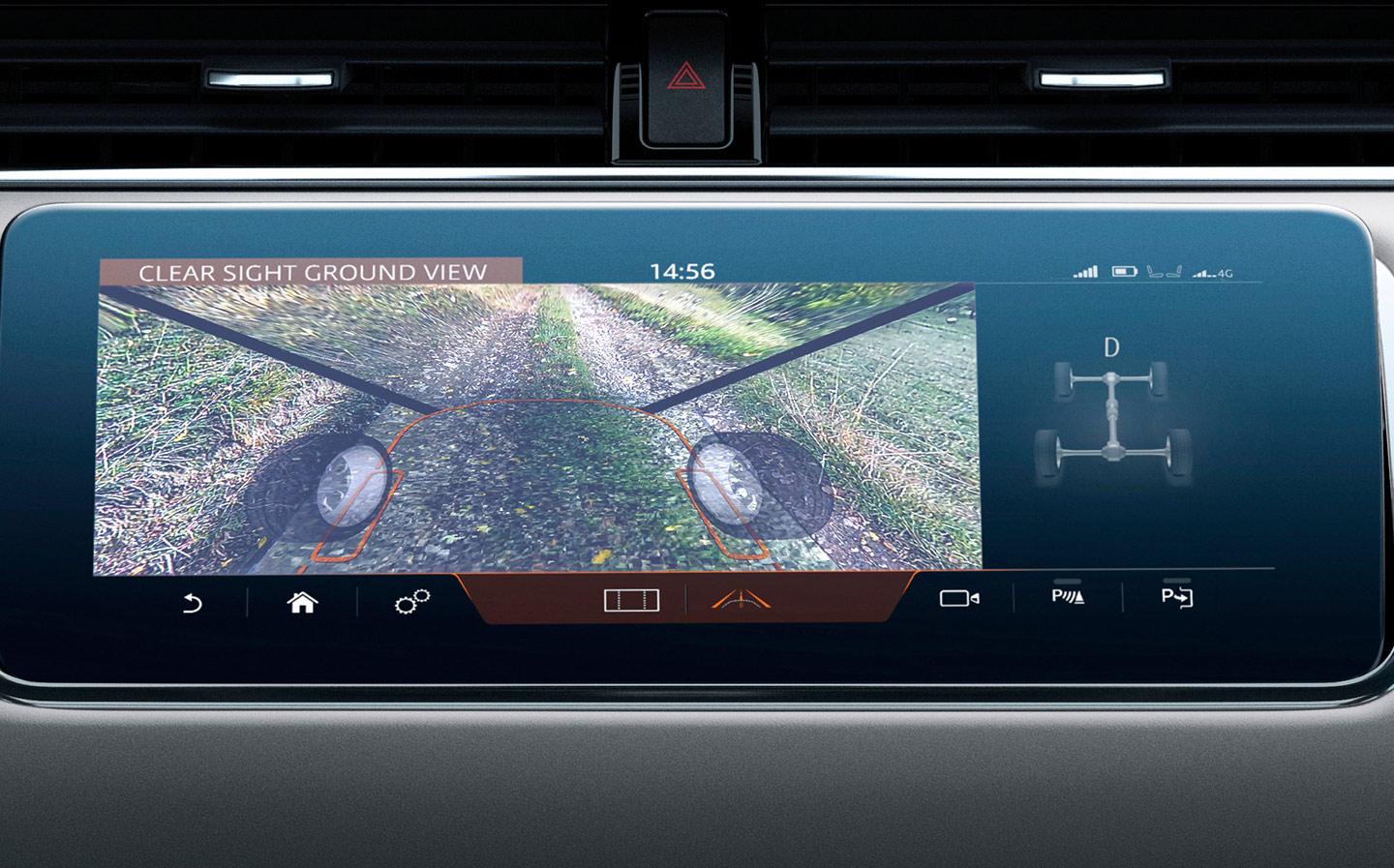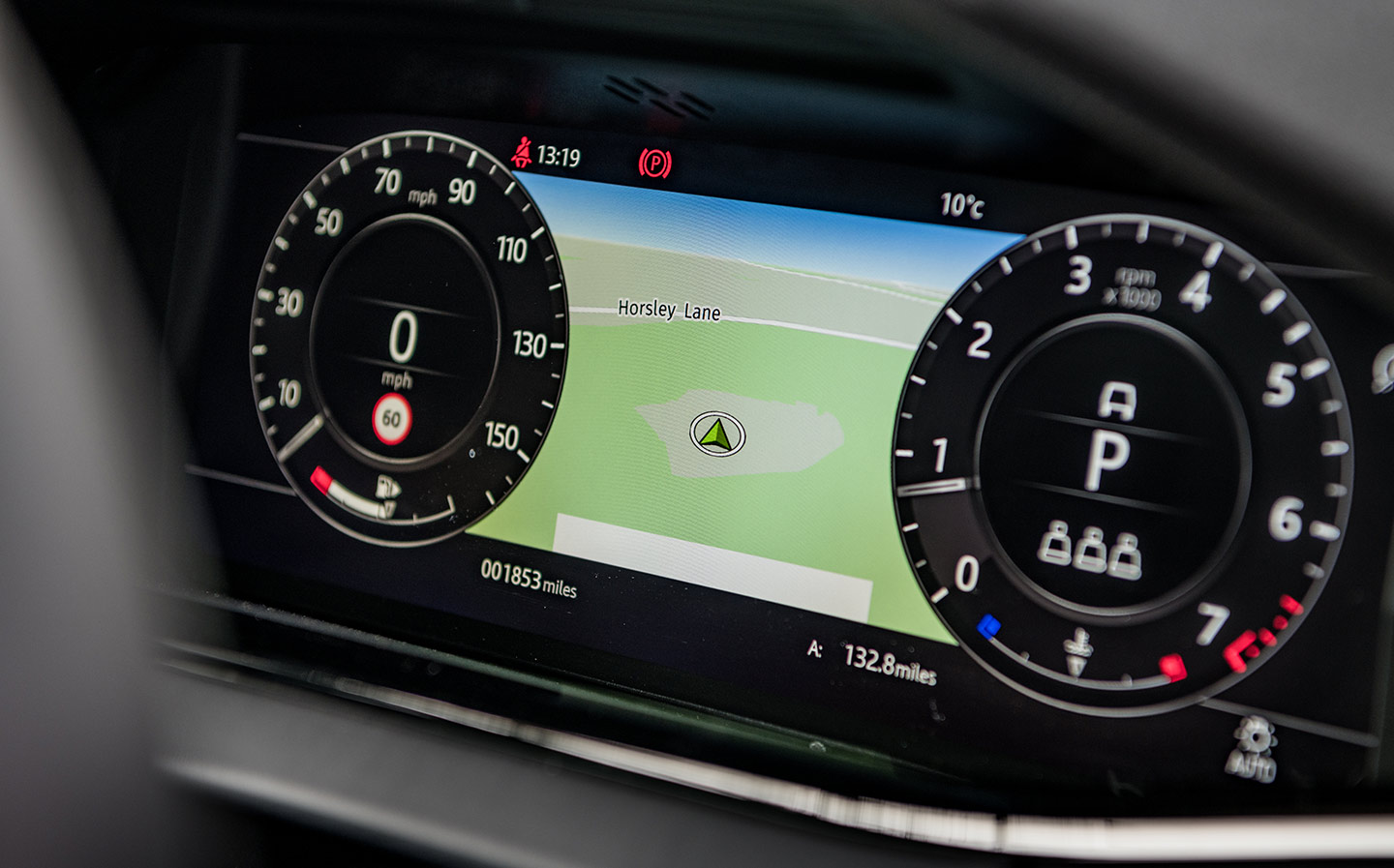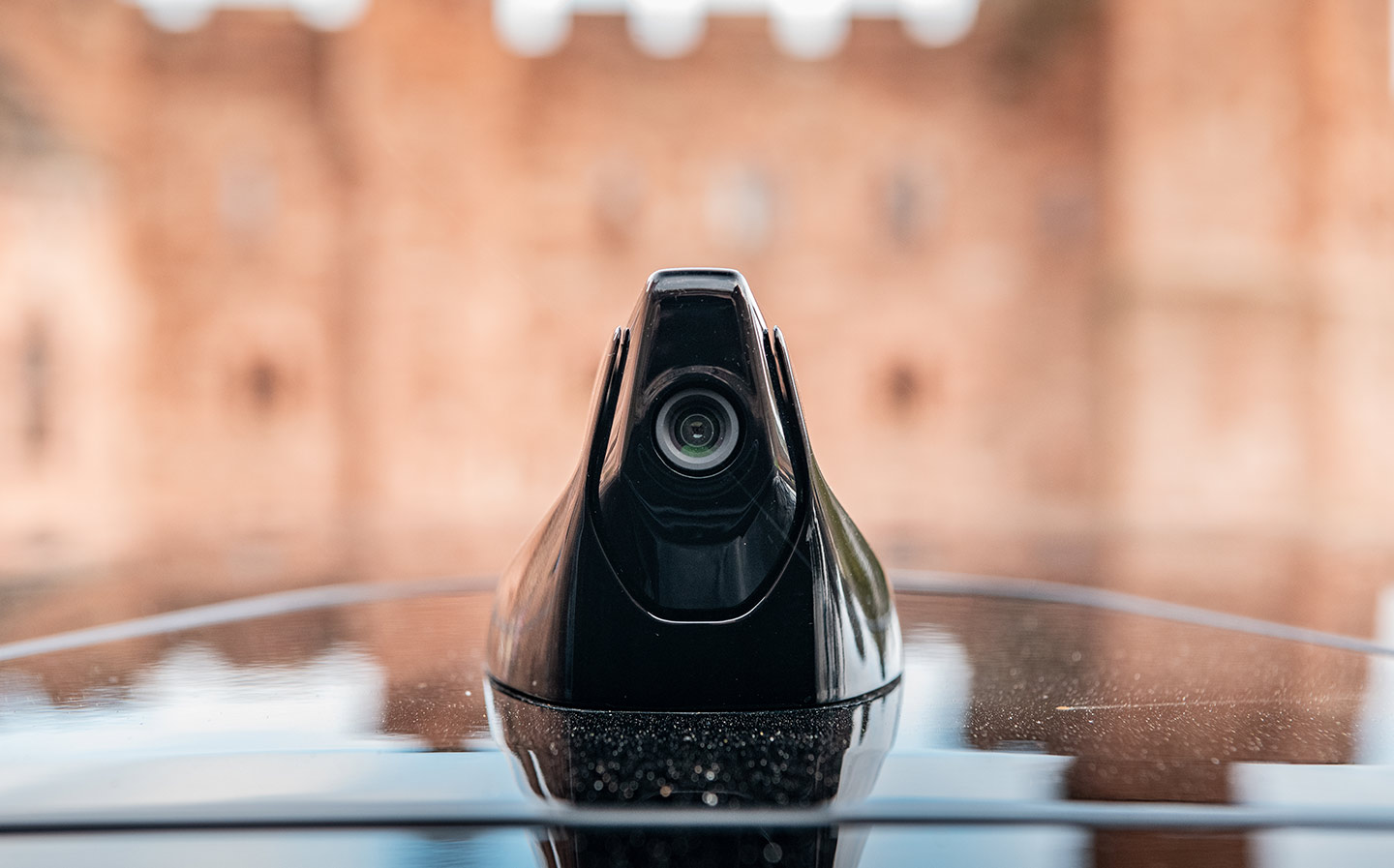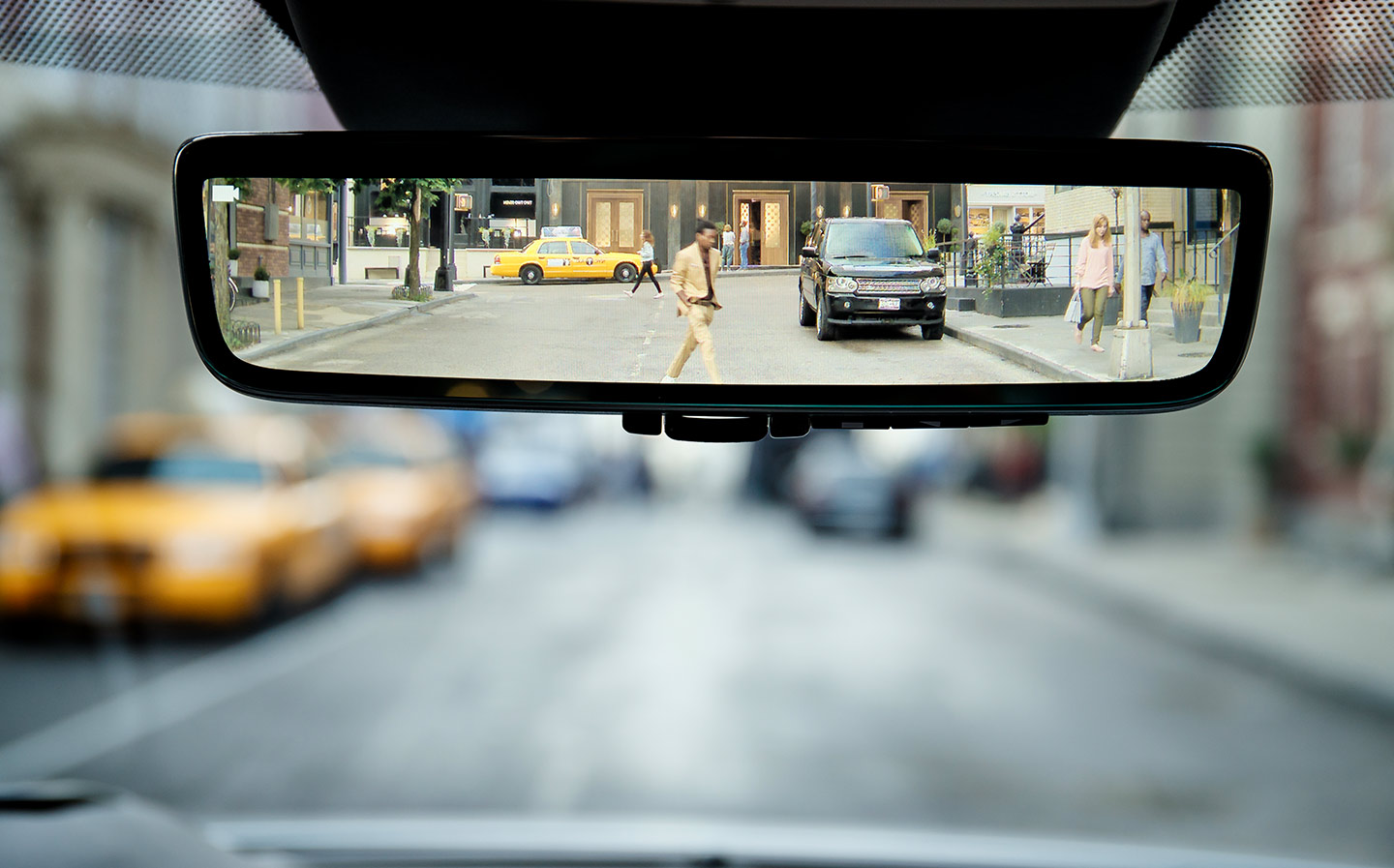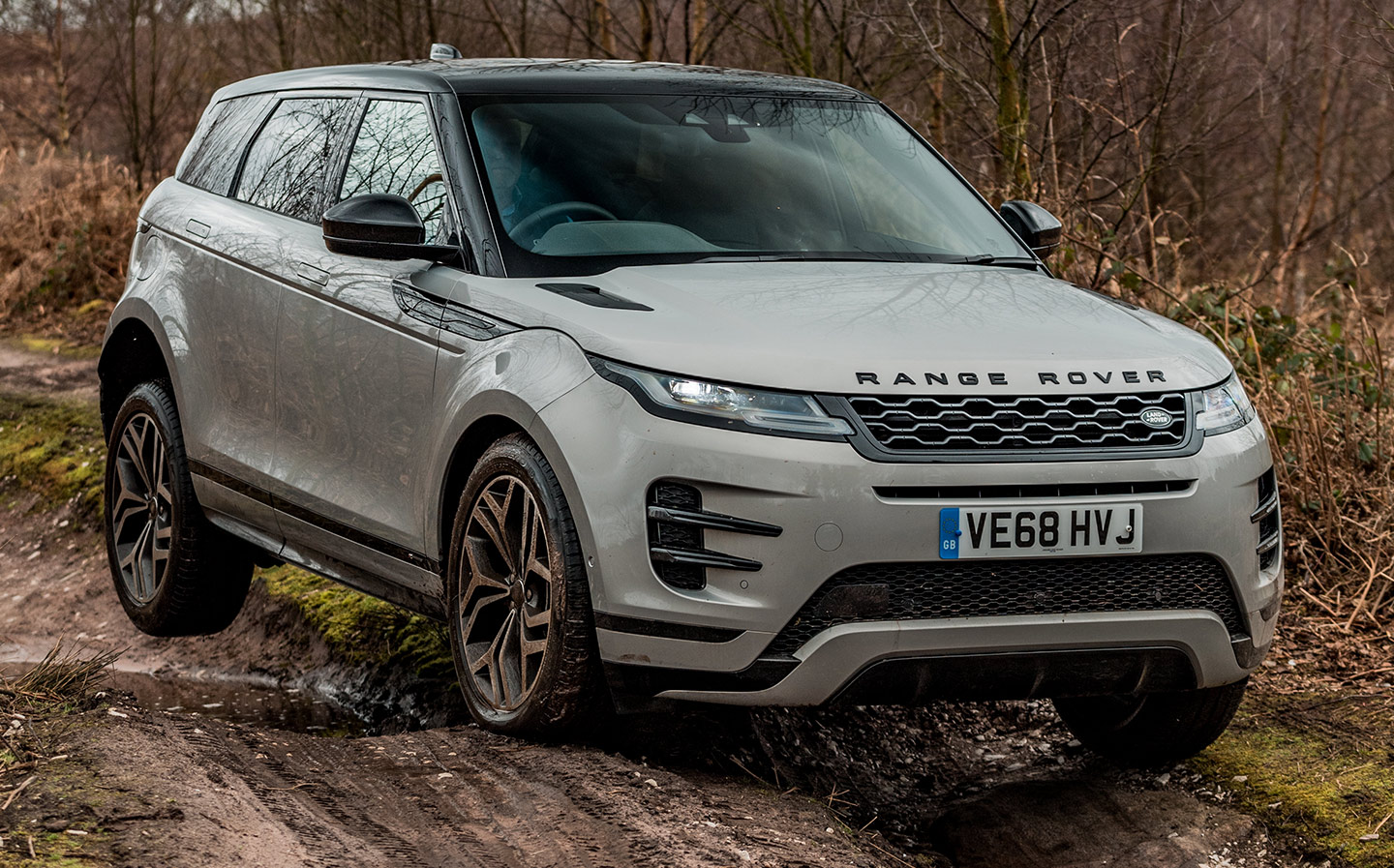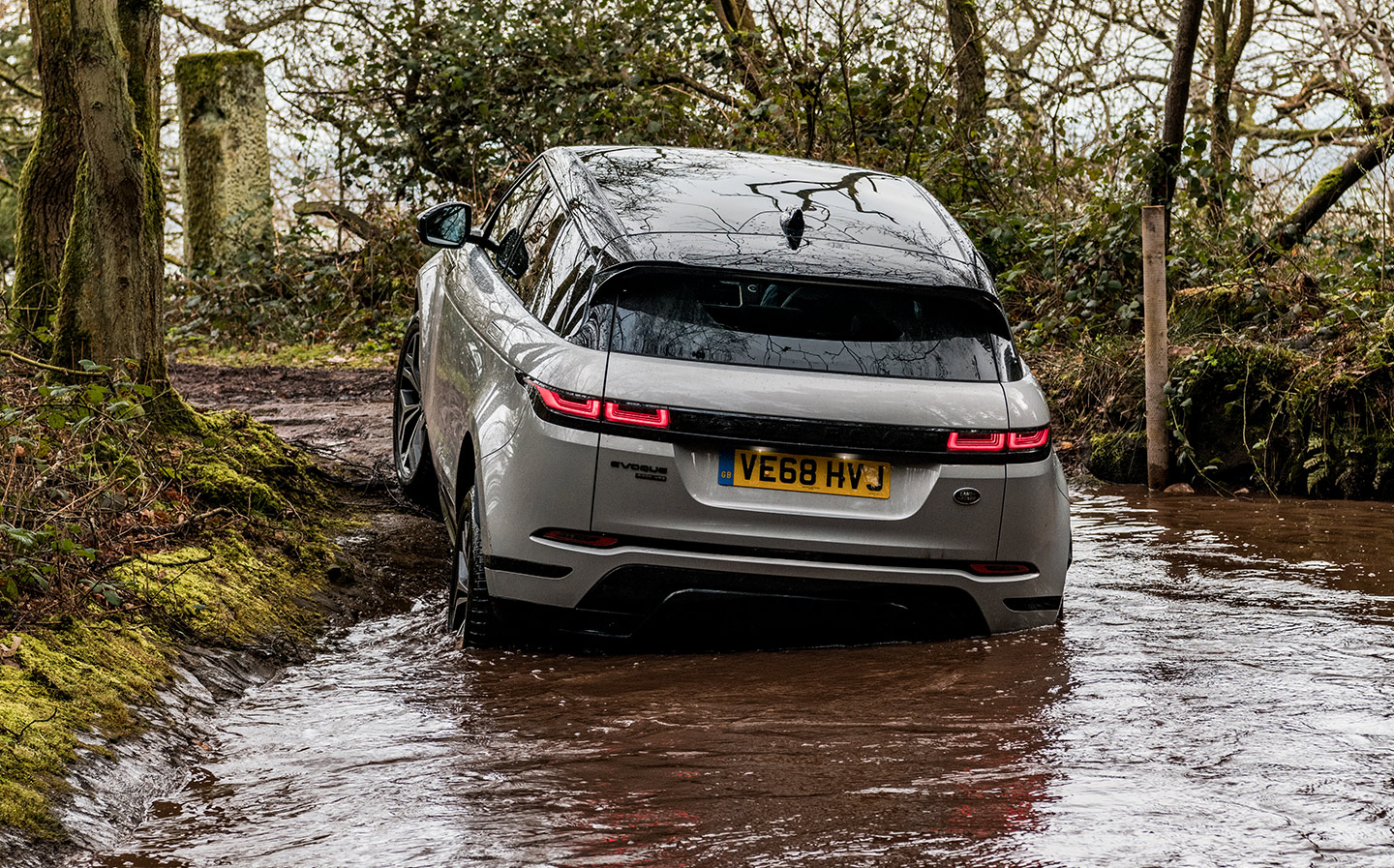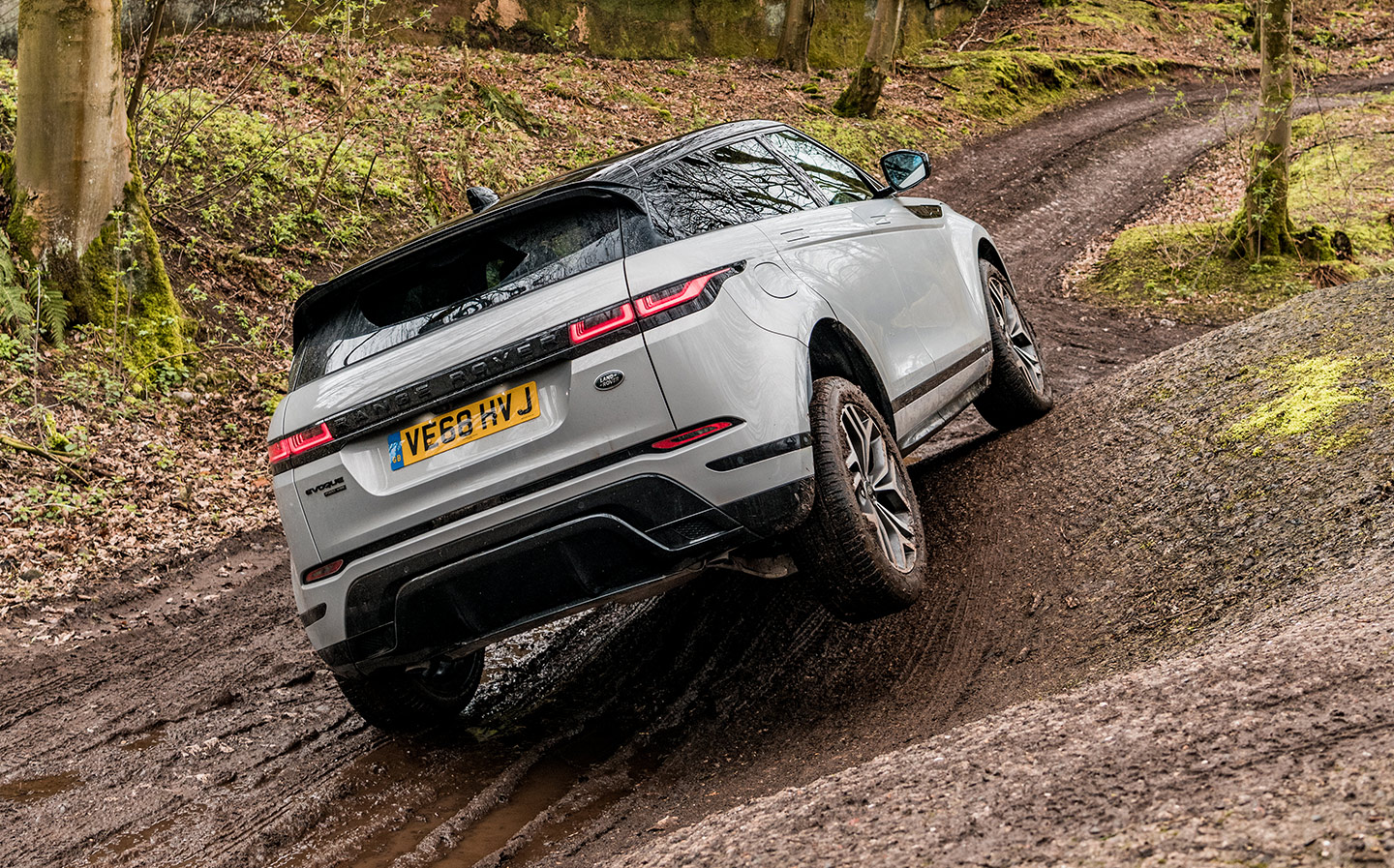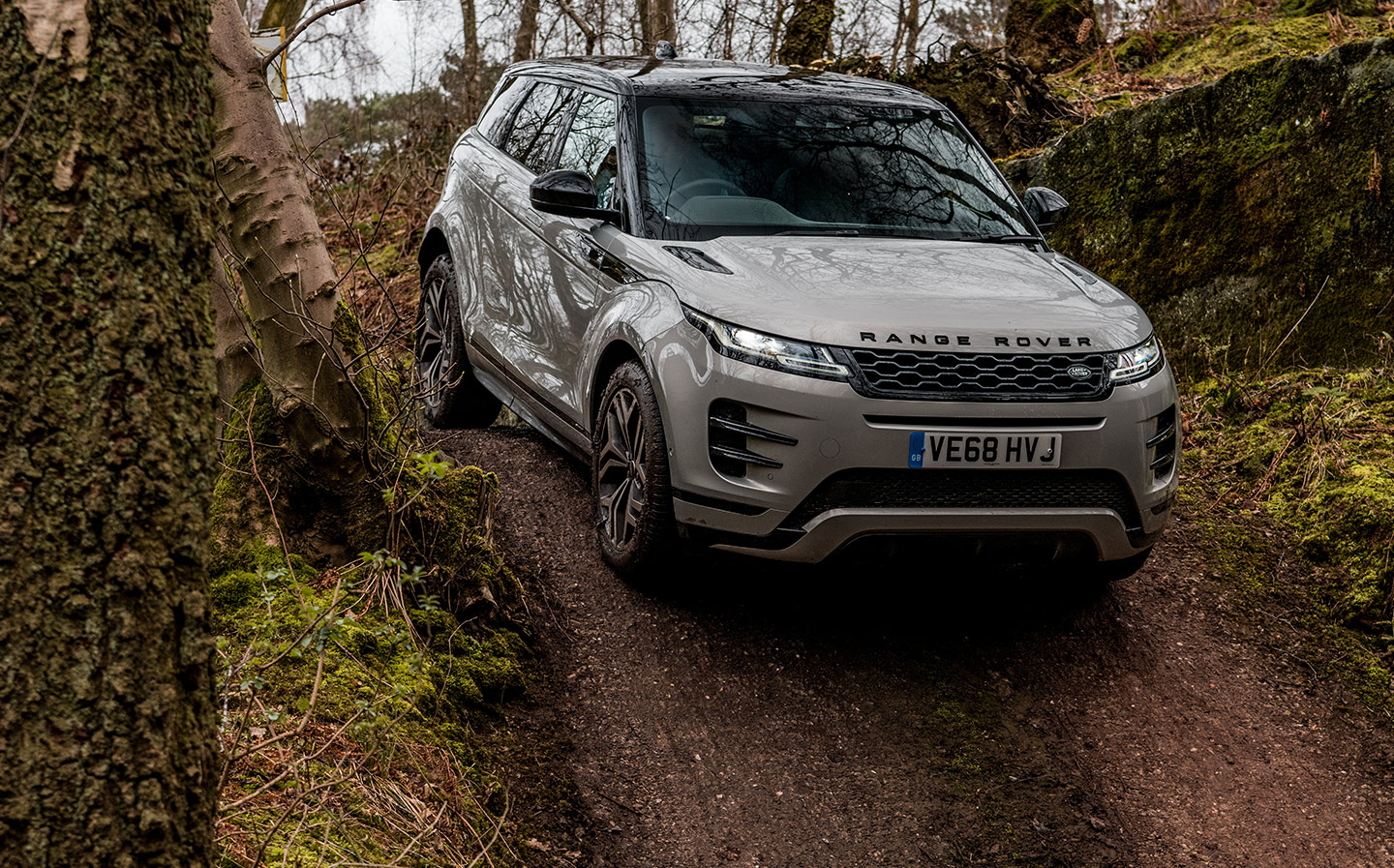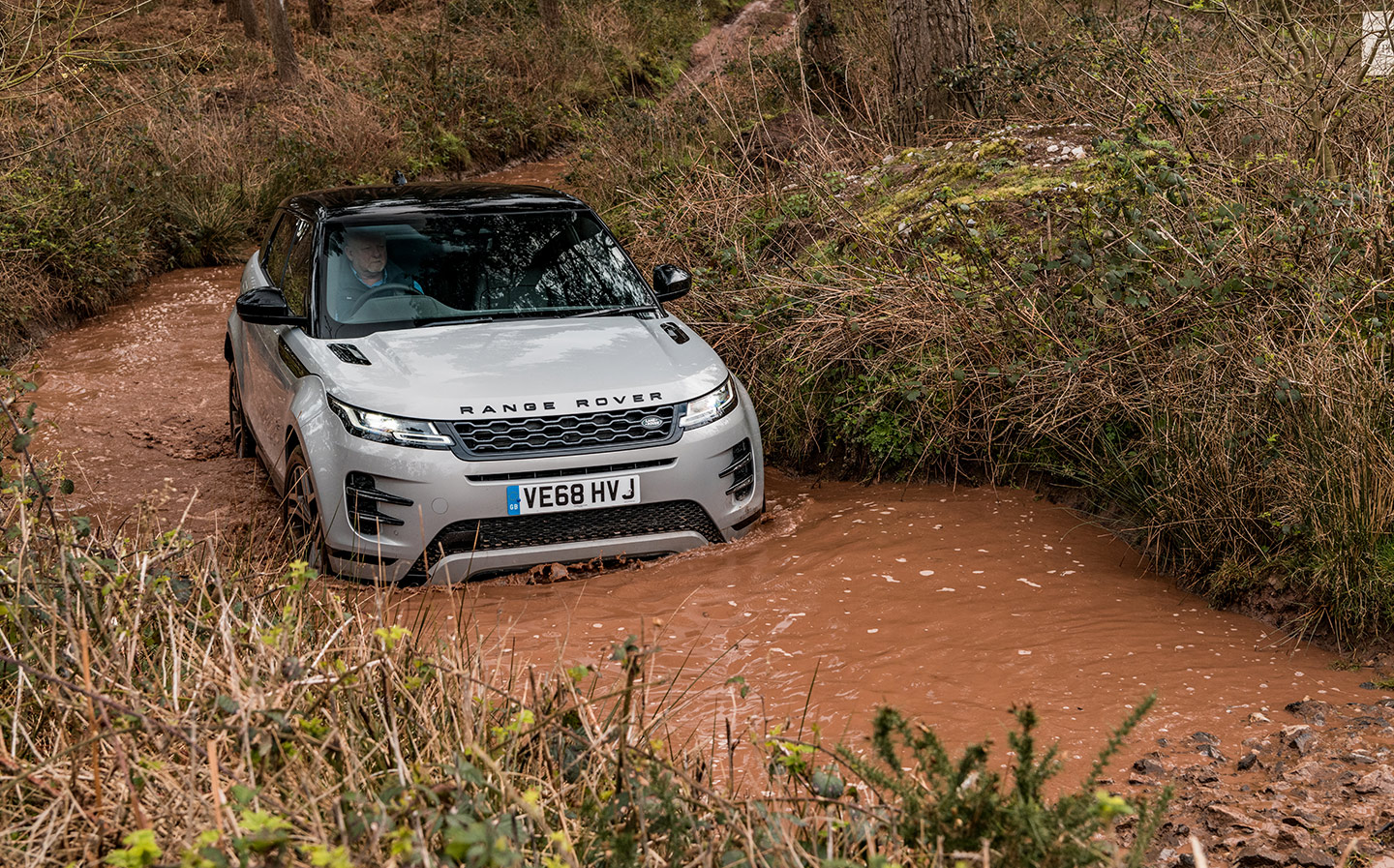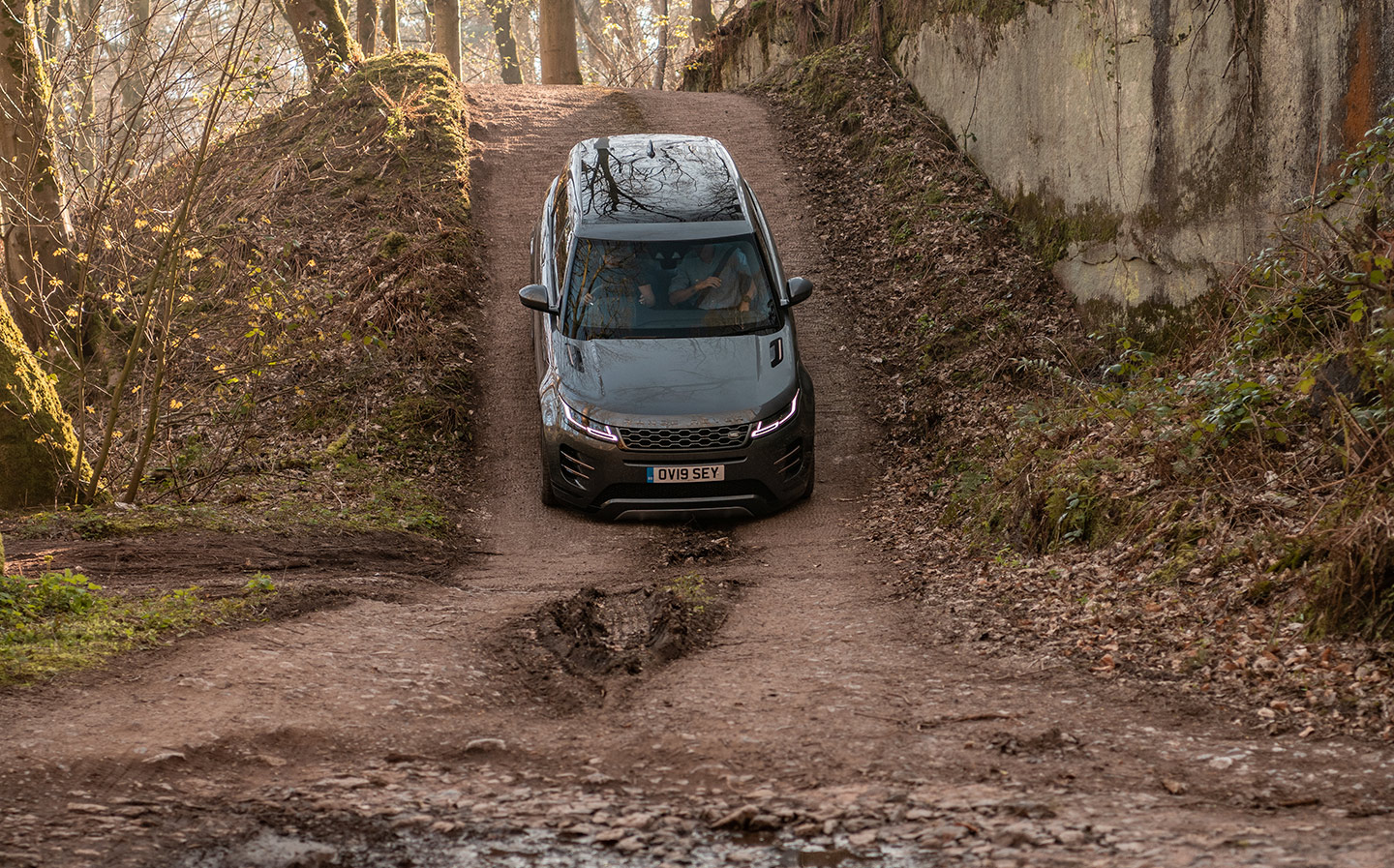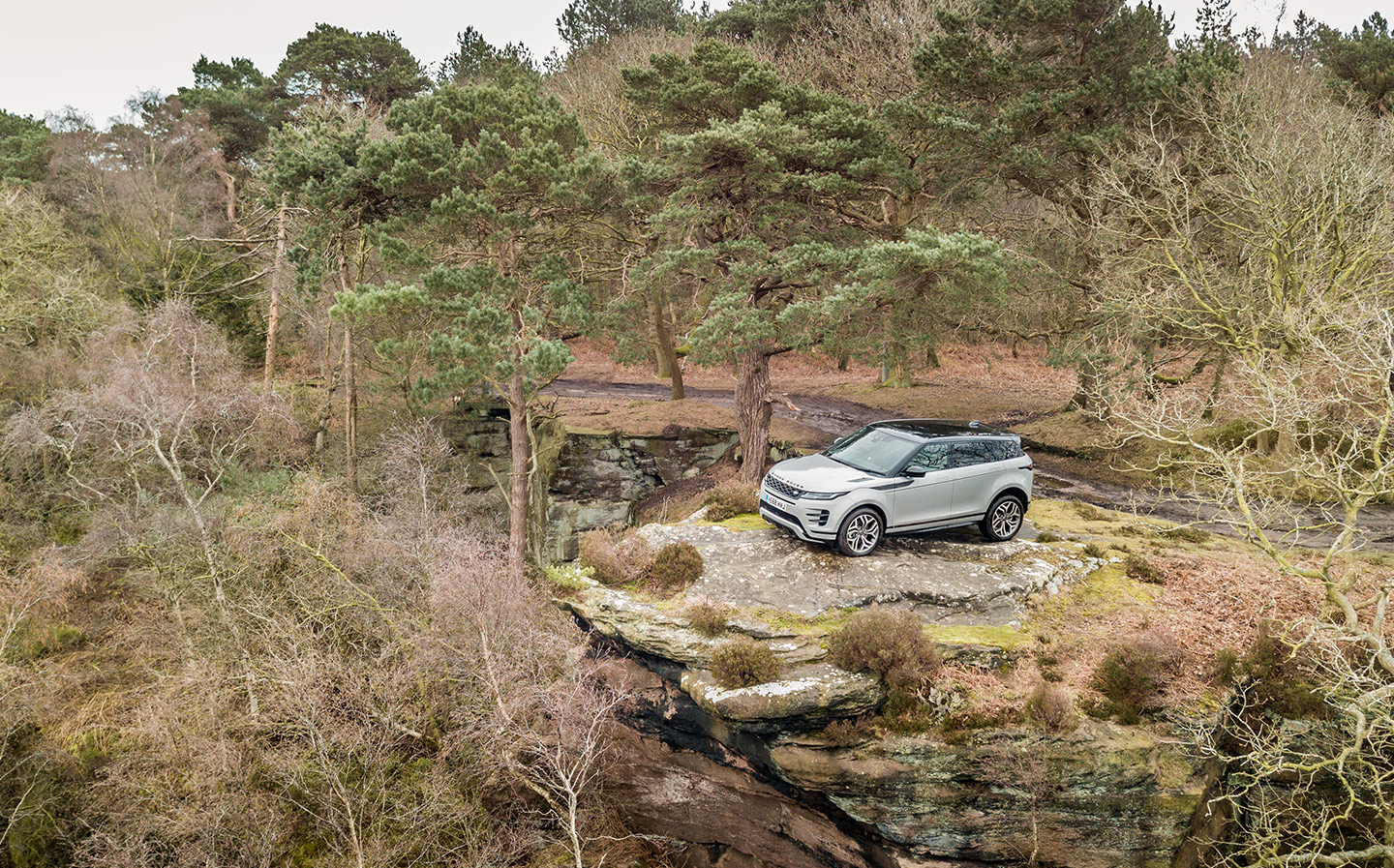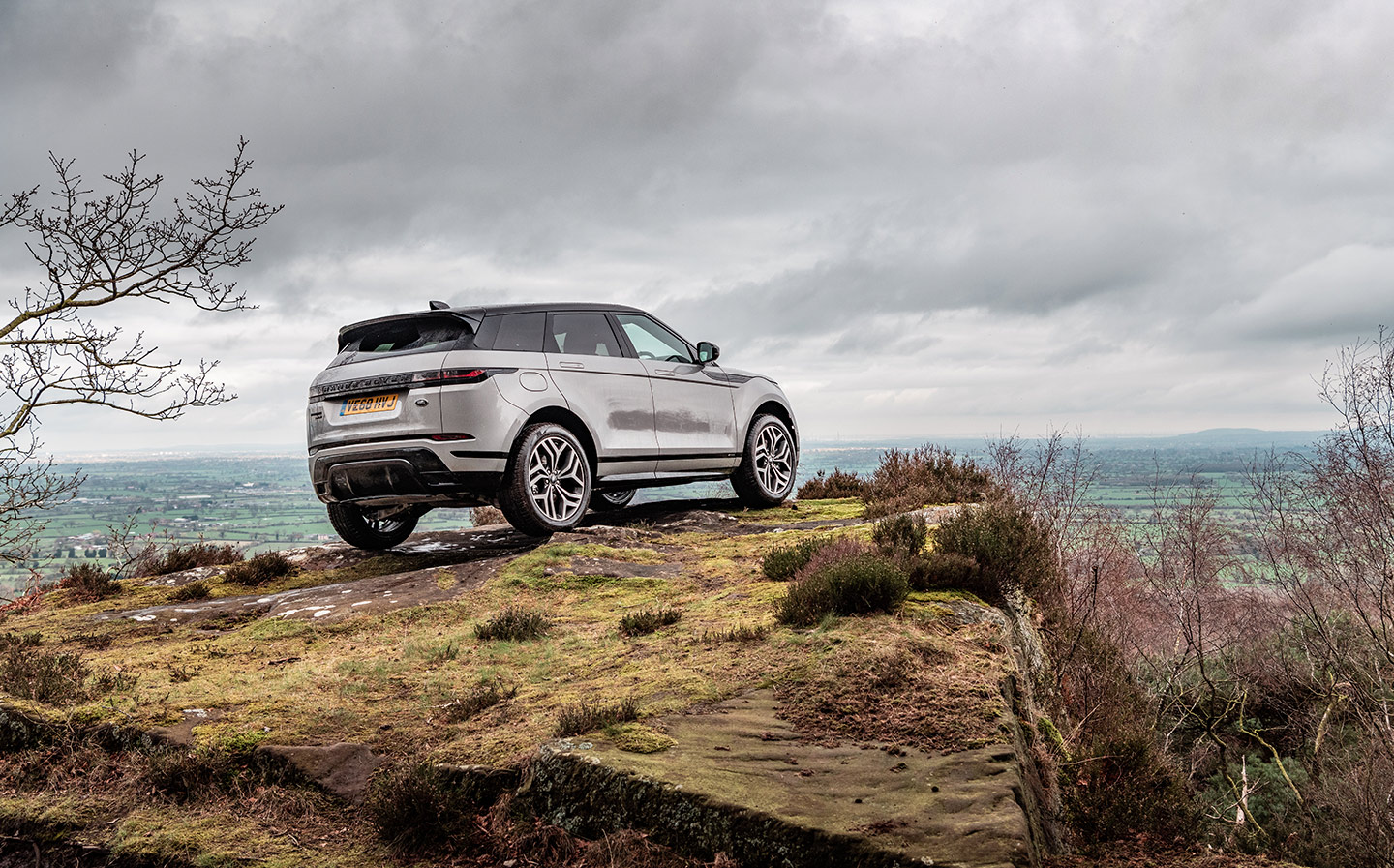2019 Range Rover Evoque review
You wanted more of everything, you got it... for a price
NOT MANY people asked for a baby Range Rover but when it launched, the Evoque became Land Rover’s fastest-selling car of all time. It was “transformational” for the business, according to the UK managing director, with three quarters of a million finding homes around the world (150,000 in the UK). The best thing for Land Rover? Two thirds of the Evoque’s buyers had never bothered one of its showrooms before.
That was before diesel power became about as cool as a Tory power stance, of course, and so the new Evoque has been extensively revised following a £1bn investment to allow new “mild hybrid” (giving a bit of an electric boost for acceleration, rather than pure-electric running) and plug-in hybrid variants, which arrive in early 2020. From 2020, all new models will feature some form of electrification.
Don’t think that diesel power has been banished, though; it will still be a major part of the car’s engine line-up. The two-wheel-drive entry-level Evoque is a traditional oil burner, in fact, but even though the rest of the range (all of which are four-wheel drive) have hybrid power, three of them feature diesel engines under the bonnet. Land Rover expects three quarters of sales to take fuel from a black pump, with the rest of sales comprising the three petrol-powered mild hybrids.
The exterior design is likely to continue to win fans, having been only subtly updated to more closely ape the larger Velar. This is particularly obvious at the rear where you find an identical full-width lighting strip and eyeliner-esque end flicks. The roofline is a little lower, for “more of a coupé aesthetic”, we were told, but no doubt this also helps reduce drag and thereby increase fuel efficiency.
Underneath, the shell is where the real work has gone, though, The new Evoque still uses a steel body structure, which means it doesn’t benefit from the lighter aluminium underpinnings of Jaguar Land Rover’s larger SUVs, including the F-Pace and Range Rover Velar (equivalent Velars are mere kilos heavier, in fact), but the Evoque is still 99.9% new, with only the door handles being carried over from the outgoing model.
The car’s engineering manager James Ragbourne told us at the Evoque’s launch that he has spent the last four years fettling the car, painstakingly improving every element of the packaging. What he managed to pull off is a trick worthy of David Copperfield, as the new model is not only capable of taking the new electric gubbins but also more spacious inside without increasing the overall length of the car – it’s still the same length as a Ford Focus.
At any speed, the ride is smooth and comfortable
This was done by moving the front and rear axles apart, which freed up 20mm of kneeroom in the rear, making it noticeably more spacious back there and comfortable for 6ft-plus adults. It’s less dingy, too, with better rearward visibility.
By revising the rear suspension set-up, Ragbourne also managed to make the boot 10% bigger, with a wider opening to make it easier to get a folded pram in and out, despite increasing the size of the fuel tank. He claimed, too, that the plug-in hybrid battery pack won’t encroach into the boot space. Ragbourne, we imagine, must have been an expert at tidying away his childhood building blocks.
The new steel structure is also 13% stiffer, we were told, which doesn’t mean the suspension is harsher but in fact helps improve ride quality and vibration because there’s less flex in the body, allowing the suspension to do the job of absorbing imperfections in the road. Helping improve refinement are new engine mounts, which position the powerplant lower in the body to improve handling and reduce vibration.
At any speed, the ride is indeed smooth and comfortable, with bumps and potholes being shrugged off better than almost any of its compact SUV rivals.
Long distance road trips are made even more relaxing thanks to reduced noise levels in the cabin, through extra sound deadening around the engine bay and doors, and the quality of the materials in the cabin really are a cut above pretty much any other premium SUV.
Tweaks such as moving the door speakers to allow larger drinks bottles to be stored, and adding up to six USB ports and three 12v (cigarette lighter) sockets really improve practicality, while the perceived quality of the cabin gets a major lift from cool new tech, like the 12.3in high definition colour driver display and the split-level Touch Pro touchscreen (or optional Touch Pro Duo double touchscreen, as found in the Velar).
It’s not the most logically laid out infotainment system but it’s absolutely packed with features, capable of receiving over-the-air software updates, and is blissfully free of lag. Android Auto and Apple Carplay are compatible, too; Land Rover probably doesn’t want you to use either but had to admit that sales can hinge on the inclusion of the two major third party operating systems these days.
Via the touchscreen you can access a new, optional feature called ClearSight Ground View, which uses a camera under the car to apparently allow you to see through the engine bay – you get an animated view of the wheels and the ground between them. We only had a brief demo of the system – it wasn’t available on our test cars – but Ragbourne claimed it is very handy not just for detecting rocks and hazards while off-road, but also around town and in multi-storey car parks. The mind boggles.
There’s another ClearSight trick up the new Evoque’s sleeve: a camera mounted in the roof fin feeds a wide angle view of what’s going on behind the car to a high definition display in the rear view mirror. It takes a bit of getting used to but makes a lot of sense, given that the view is never encumbered by C-pillars or unhelpfully-tall rear passengers. The camera’s lens has a hydrophobic coating, apparently, meaning rain and mud shouldn’t stick to it. Even if it did, you can still switch back to a plain old glass mirror at the flick of a switch.
A word of warning: prices rise rapidly if you want much of the smarter kit, including Touch Pro Duo and the ClearSight mirror. While prices start at £31,615 for the basic 2WD diesel Evoque they jump to £35,115 for an all-wheel-drive D150 diesel hybrid and then jump again to £38,265 if you want a few extra luxuries in the Evoque S, the next trim level up. Go for that engine in the range-topping HSE trim and you’ll be asked to fork out nearly £45,000. There’s even a special First Edition model: yours in petrol form for £50,425.
Anyone spending that much is unlikely to challenge their prized Evoque to more than a Chelsea school run, but importantly, all versions still have remarkable off-road capabilities. Ground clearance is excellent, at 212mm, with a 100mm increase in wading depth over the old model (now 600mm), while approach and departure angles are 25 degrees in the front and 30.6 degrees in the rear.
We took a D180 diesel model around Land Rover’s off-road facility in Cheshire and it really is a stunningly proficient bit of kit for scrabbling about in the rough stuff, with Land Rover’s software systems that send grip to each wheel individually to control traction on steep inclines and descents, allowing you to sit back and let the car do the work.
It may not have the active air suspension you’d find in a full-size Rangie or Discovery (Evoque has “passive” suspension front and rear) but we’d not really like to encounter the kind of terrain that might get the Evoque stuck.
While most owners won’t experience a tenth of their car’s 4×4 prowess, for many the important thing is that the capability is there if needed. This is Land Rover’s main selling point, in fact – above and beyond the plush interior and refinement – that will tempt buyers to the Land Rover over rivals like the BMW X1, Audi Q3, Mercedes GLA or Volvo XC40.
Importantly, all versions still have remarkable off-road capabilities
The most efficient four-wheel-drive model, the D150, is claimed to return 39.9-41.9mpg under the new, more realistic WLTP test, which is comparable with the chief rivals mentioned above despite the Evoque being around 100kg heavier. That engine is also very affordable in tax terms; rated at 149g/km you’ll pay £210 VED for the first year and then £145 thereafter (assuming the car doesn’t cost more than £40,000, the threshold for an extra £320 government charge).
The three petrol hybrid versions have comparable power and torque (towing up to 1,800kg braked versus 2,000kg for the diesel hybrids) but suffer when it comes to efficiency: you’re looking at 28.5mpg to 30.7mpg regardless of whether you go for the P200, P250 or P300 variant, surprisingly.
I really looked for faults when testing the new Range Rover Evoque but honestly, it was a real struggle. You can point to the low efficiency of the petrol versions, the extra weight it carries or the eye-watering prices of the most desirable variants, but these are unlikely to put off potential customers who’re paying on finance or via company schemes.
Land Rover sought to make new Evoque more spacious, more practical, more capable off-road, more refined on-road and more high tech and luxurious inside; without a doubt it succeeded in creating a class-leader in almost all these areas.
Tweet to @wdron Follow @wdron
Head to head
Range Rover Evoque vs Volvo XC40 vs Audi Q3 (petrol models)
| Range Rover Evoque SE P200 AWD Automatic MHEV | Volvo XC40 T4 AWD Auto Inscription Pro | Audi Q3 S line 40 TFSI quattro 190 PS S tronic | |
| Price | £42,625 | £36,985 | £37,015 |
| Fuel | Petrol hybrid | Petrol | Petrol |
| Power | 197bhp | 187bhp | 187bhp |
| Torque | 236lb ft @ 1,200rpm | 221lb ft @ 1,400rpm | 236lb ft @ 1,500rpm |
| Kerb weight | 1,845kg | 1,717kg | 1,620kg |
| Top speed | 134mph | 130mph | 136mph |
| 0-62mph | 8.5sec | 8.5sec | 7.4sec |
| Economy (WLTP) | 28.6-30.7mpg | 32.8-35.3mpg | 30.4-31.4mpg |
| C02 (NEDC) | 176g/km | 161g/km | 170g/km |
| Towing (braked) | 1,800kg | 2,000kg | 2,100kg |
| Towing (unbraked) | 750kg | N/a | 750kg |


